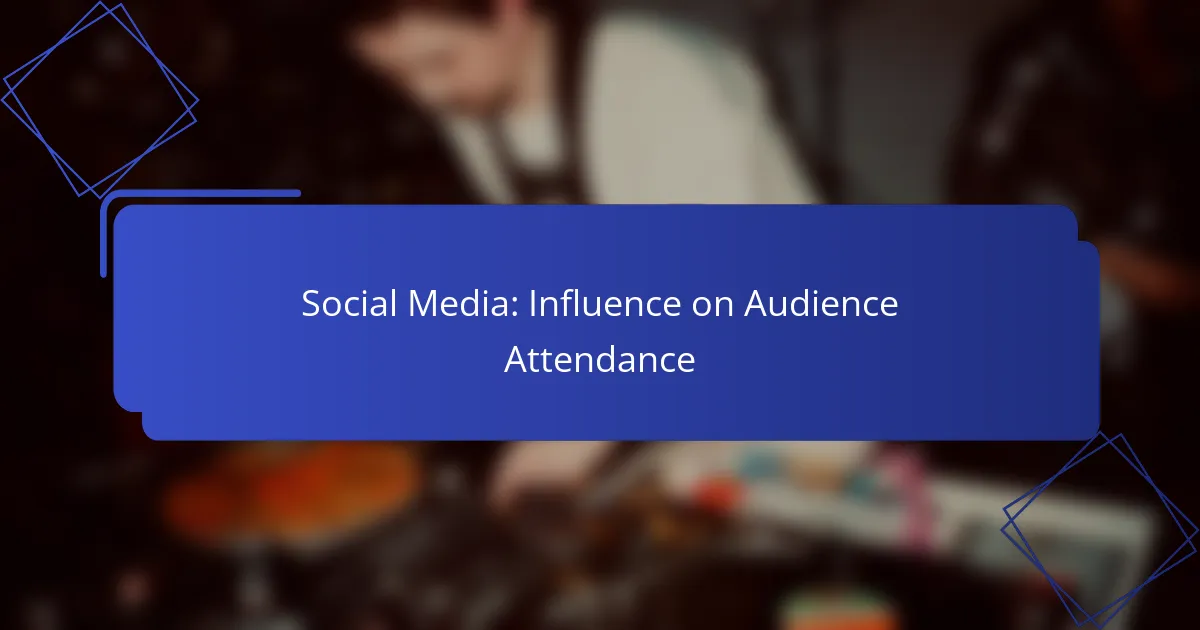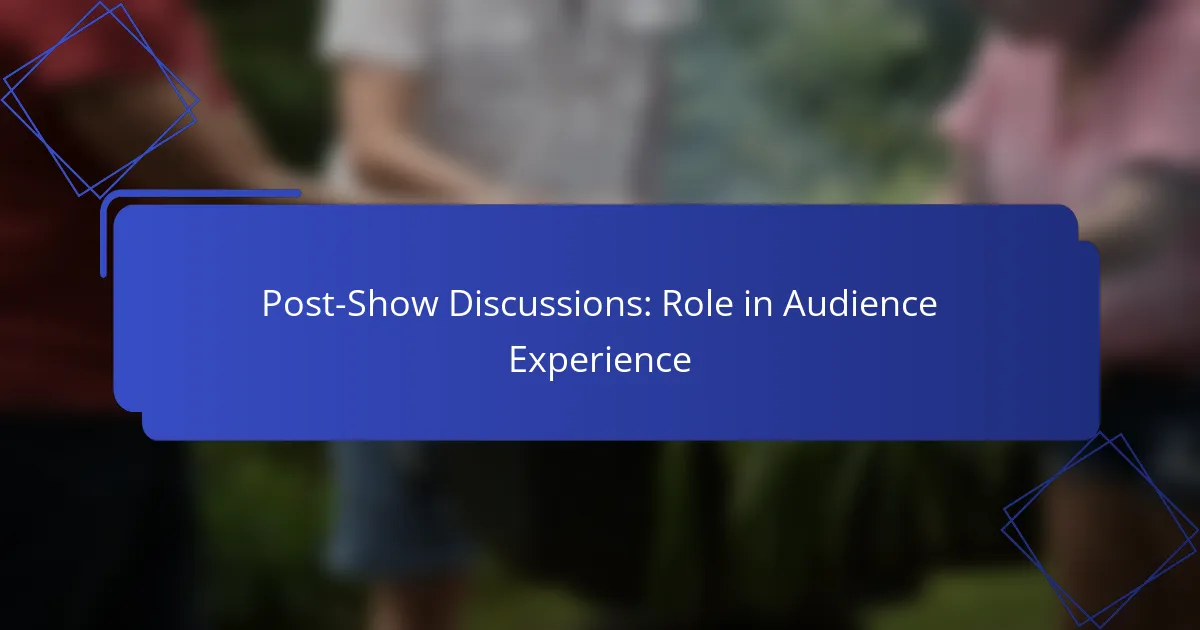Community partnerships play a crucial role in boosting theater attendance by tapping into local resources and networks. By collaborating with schools, nonprofit arts organizations, and community centers, theaters can create a supportive ecosystem that attracts diverse audiences and fosters stronger community ties.
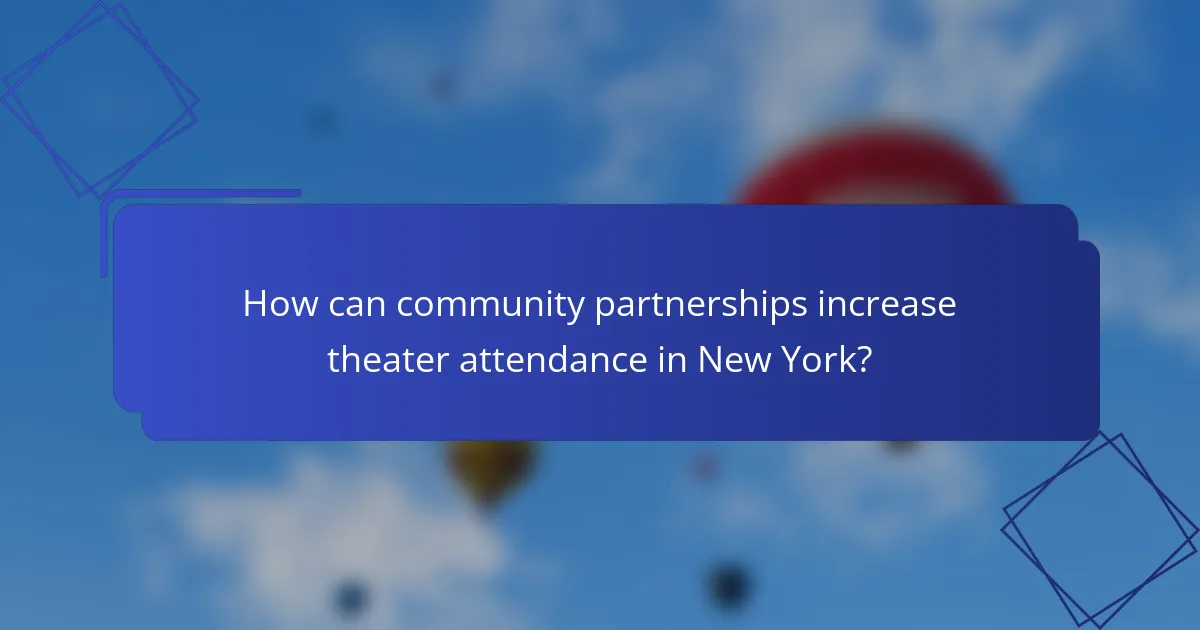
How can community partnerships increase theater attendance in New York?
Community partnerships can significantly enhance theater attendance in New York by leveraging local resources, networks, and audiences. Collaborating with local organizations and businesses creates a supportive ecosystem that promotes theater events and attracts diverse audiences.
Collaborative marketing campaigns
Collaborative marketing campaigns involve theaters partnering with local businesses and organizations to promote performances. This can include joint advertising efforts, social media promotions, and shared email newsletters. By pooling resources, theaters can reach wider audiences and engage potential attendees who may not have been aware of the events.
For example, a theater might team up with a nearby restaurant to offer a dinner-and-show package, effectively enticing patrons to enjoy both experiences. This not only boosts ticket sales but also fosters community ties.
Local business sponsorships
Local business sponsorships provide financial support to theaters while offering businesses visibility in the community. Businesses can sponsor specific performances or events, gaining promotional opportunities such as logo placement on marketing materials and recognition during shows. This mutually beneficial arrangement can increase theater funding and enhance local business exposure.
In New York, businesses might consider sponsoring community-focused productions that resonate with their customer base, creating a sense of shared investment in the arts.
Community engagement events
Community engagement events are initiatives that invite local residents to participate in theater activities, fostering a sense of ownership and connection. These can include workshops, open rehearsals, or free performances in public spaces. Such events encourage attendance by making theater more accessible and relatable to the community.
For instance, hosting a free outdoor performance in a park can draw in families and individuals who might not typically attend traditional theater venues. Engaging the community in this way can lead to increased ticket sales for future productions as attendees develop a deeper appreciation for the arts.
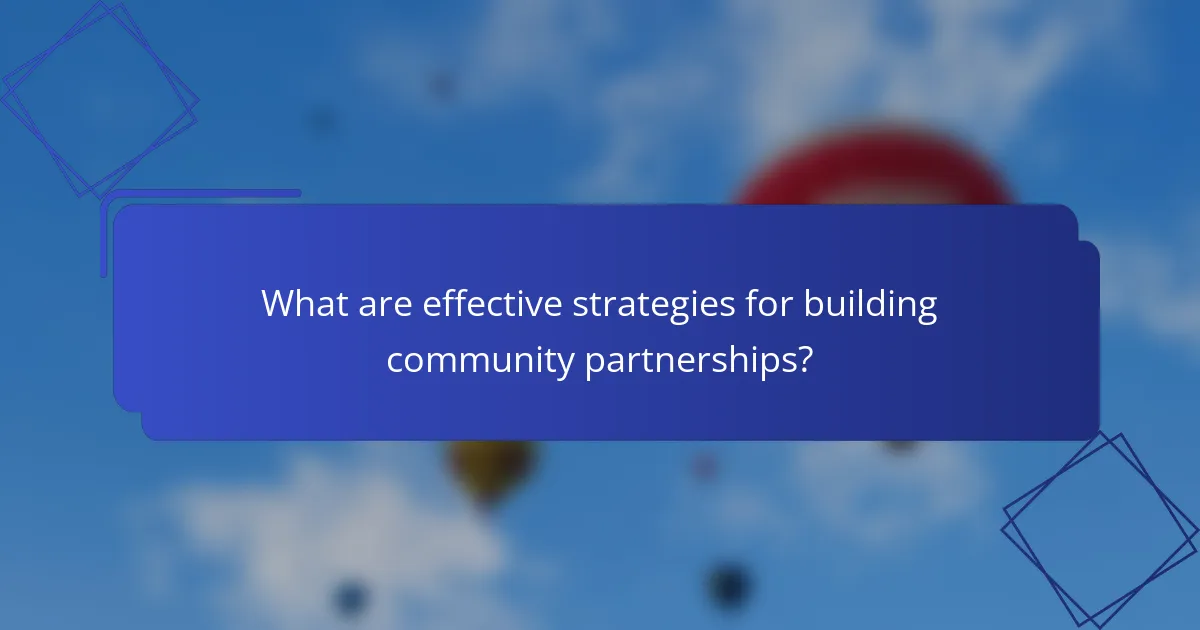
What are effective strategies for building community partnerships?
Effective strategies for building community partnerships involve identifying local organizations, creating agreements that benefit both parties, and leveraging social media for outreach. These approaches foster collaboration, enhance theater attendance, and strengthen community ties.
Identifying local organizations
Start by researching local non-profits, schools, and community groups that align with your theater’s mission. Consider organizations focused on the arts, education, or social services, as they often have established networks and audiences.
Engage with these organizations through community events or meetings to understand their goals and how they might complement your theater’s offerings. Building relationships is key; aim for genuine connections rather than transactional interactions.
Creating mutual benefit agreements
Draft agreements that outline how both parties will benefit from the partnership. This could include ticket discounts for organization members, co-hosted events, or shared marketing efforts. Ensure that both sides have clear expectations and responsibilities.
Regularly review and adjust these agreements to reflect changing needs or goals. Flexibility can help maintain a strong partnership and encourage ongoing collaboration.
Leveraging social media outreach
Utilize social media platforms to promote joint events and initiatives. Create engaging content that highlights the partnership and encourages followers to participate. Tag partner organizations in posts to expand reach and visibility.
Consider running social media campaigns that incentivize attendance, such as giveaways or exclusive previews for followers of both organizations. This approach can significantly enhance engagement and drive ticket sales.
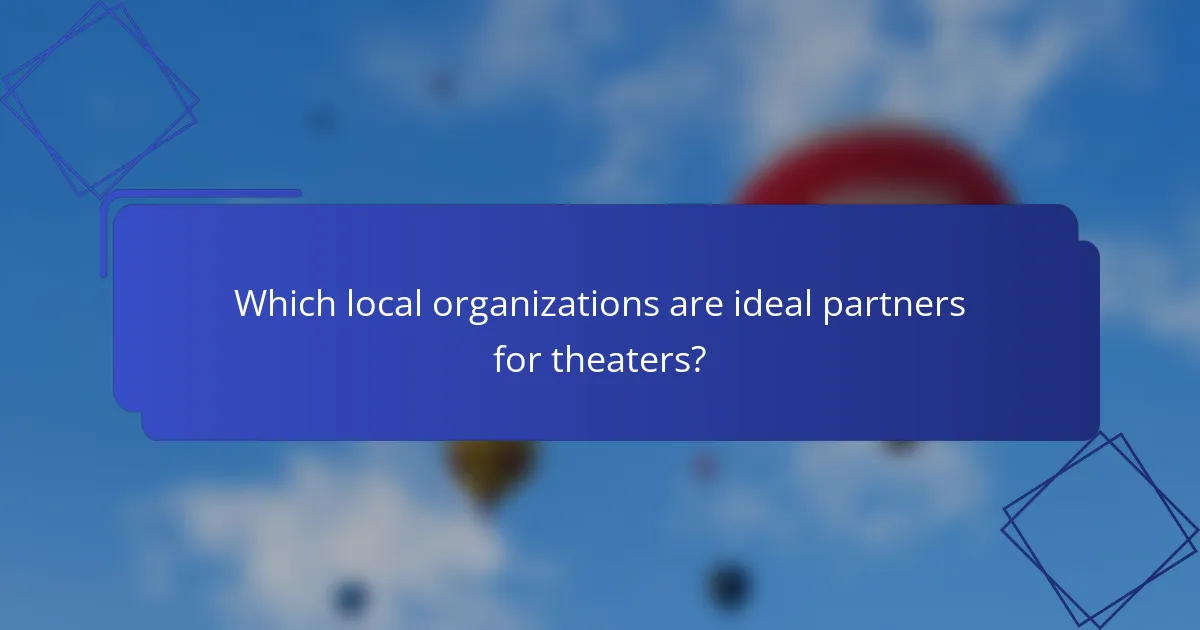
Which local organizations are ideal partners for theaters?
The ideal partners for theaters include schools, nonprofit arts organizations, and community centers. Collaborating with these entities can enhance outreach, diversify audiences, and ultimately boost attendance at performances.
Schools and educational institutions
Schools and educational institutions are crucial partners for theaters, as they can provide access to a large audience of students and families. Engaging with local schools through field trips, workshops, or special performances can create a pipeline of future theatergoers.
Consider offering discounted tickets for student groups or hosting educational programs that align with school curricula. This not only fosters a love for the arts but also strengthens community ties.
Nonprofit arts organizations
Nonprofit arts organizations often share similar goals with theaters, making them ideal partners for collaboration. These organizations can help promote performances, share resources, and reach underserved populations.
Joint initiatives, such as co-hosted events or cross-promotional campaigns, can enhance visibility and attract a broader audience. Establishing partnerships with local arts nonprofits can also lead to grant opportunities that benefit both parties.
Community centers
Community centers serve as hubs for local residents, making them excellent partners for theaters. By collaborating with these centers, theaters can tap into diverse community networks and engage with various demographics.
Organizing community events, workshops, or open houses at these centers can increase awareness and interest in theater productions. Offering special community nights or family packages can further encourage attendance and participation.
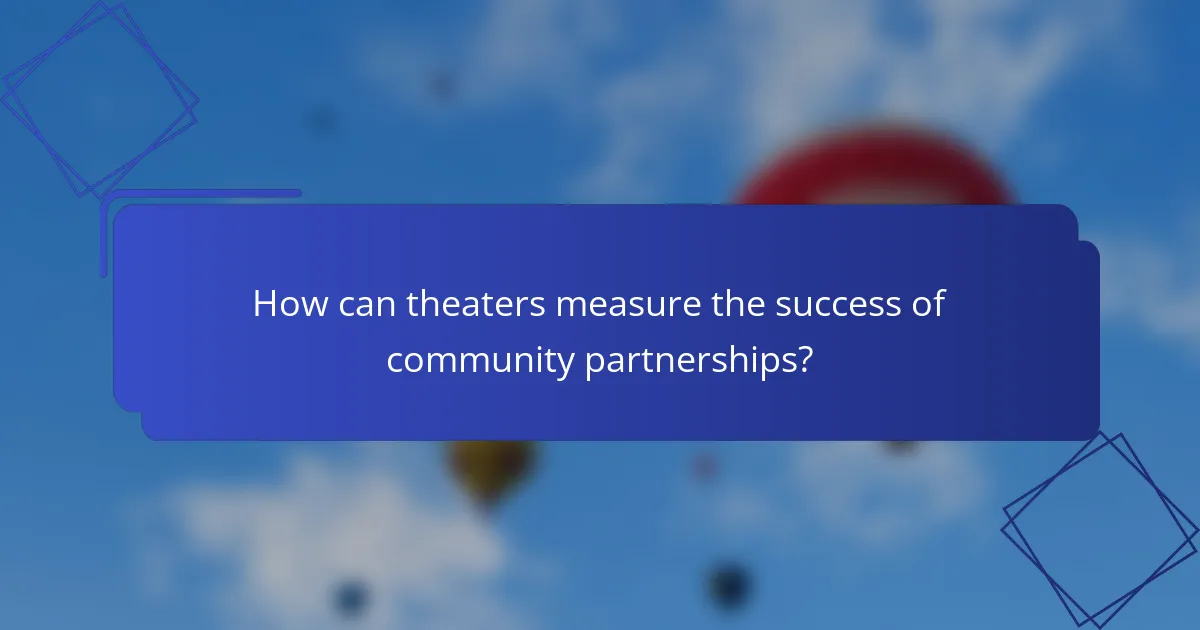
How can theaters measure the success of community partnerships?
Theaters can measure the success of community partnerships through various methods that assess attendance, audience satisfaction, and the overall impact of collaborations. These metrics provide valuable insights into how effectively partnerships enhance theater engagement and community involvement.
Attendance tracking
Attendance tracking involves monitoring ticket sales and audience numbers for performances linked to community partnerships. Theaters can compare attendance figures before and after initiating partnerships to gauge their influence on audience turnout.
Utilizing ticketing software can streamline this process, allowing theaters to analyze demographic data and identify trends. For instance, a theater might find that community events attract younger audiences, indicating a successful outreach effort.
Audience feedback surveys
Collecting audience feedback through surveys is essential for understanding the effectiveness of community partnerships. Theaters can distribute surveys at events or via email to gather insights on audience experiences and satisfaction levels.
Surveys should include questions about the event’s appeal, the perceived value of community involvement, and suggestions for improvement. A response rate of around 20-30% is typical, providing a solid sample for analysis.
Partnership impact assessments
Partnership impact assessments evaluate the broader effects of collaborations on both the theater and the community. This can include analyzing changes in community engagement, cultural enrichment, and financial contributions from local businesses.
Theaters may conduct these assessments annually, using qualitative and quantitative data to measure success. For example, a theater might report increased local sponsorships and enhanced community relationships as indicators of successful partnerships.
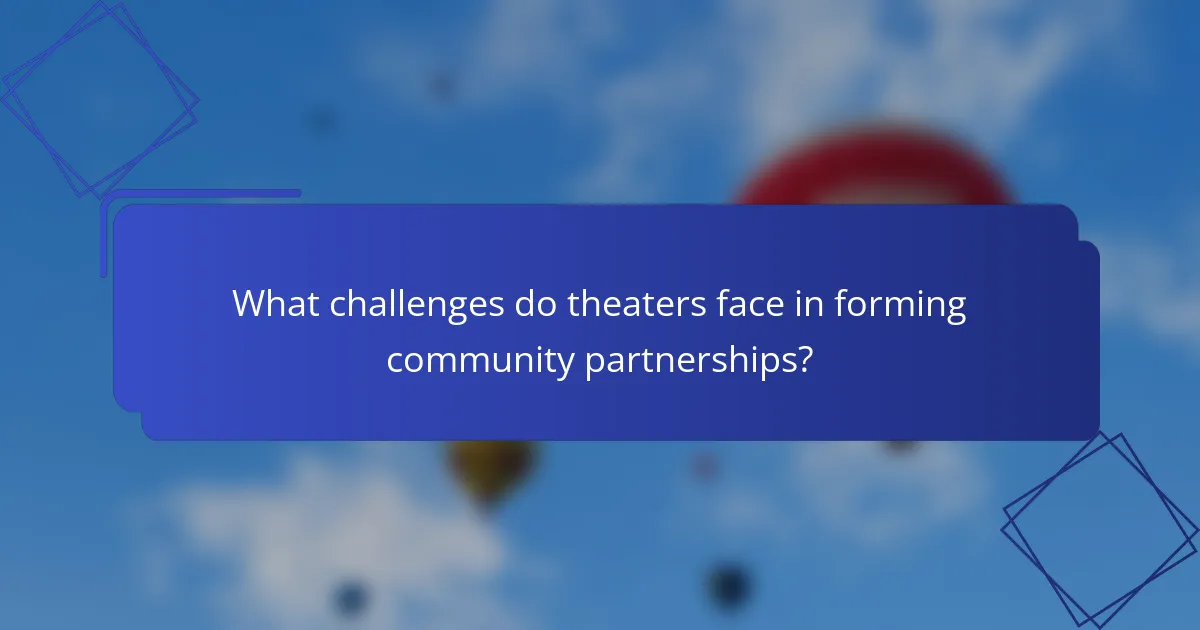
What challenges do theaters face in forming community partnerships?
Theaters often encounter several challenges when forming community partnerships, including limited resources, misaligned goals, and community engagement fatigue. These obstacles can hinder collaboration and reduce the effectiveness of initiatives aimed at boosting attendance.
Resource allocation
Effective partnerships require adequate resource allocation, which can be a significant challenge for theaters. Many organizations operate on tight budgets, making it difficult to dedicate funds or staff to partnership initiatives. Prioritizing partnerships may mean sacrificing other programs, so theaters must carefully assess their financial and human resources.
To mitigate this issue, theaters can explore shared resources with community partners, such as co-hosting events or pooling marketing efforts. This approach can reduce costs while enhancing visibility and outreach.
Alignment of goals
For a partnership to succeed, the goals of the theater and its community partners must align. Discrepancies in objectives can lead to misunderstandings and ineffective collaboration. Theaters should engage potential partners in open discussions to clarify each party’s goals and expectations before committing to a partnership.
Establishing common objectives can create a stronger foundation for collaboration. For instance, if a theater aims to increase youth attendance, partnering with local schools can provide a clear mutual benefit, fostering a sense of shared purpose.
Community engagement fatigue
Community engagement fatigue can be a significant barrier to forming partnerships, as residents may feel overwhelmed by constant outreach from various organizations. This fatigue can lead to decreased participation and interest in theater programs. To combat this, theaters should focus on meaningful, targeted outreach rather than broad, frequent communications.
Building long-term relationships with community members can help alleviate fatigue. Theaters can achieve this by involving locals in the planning process and creating events that resonate with their interests, ensuring that engagement feels relevant and valuable.


